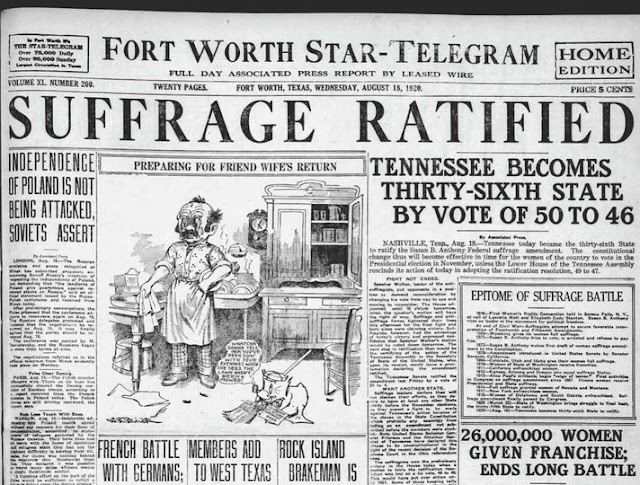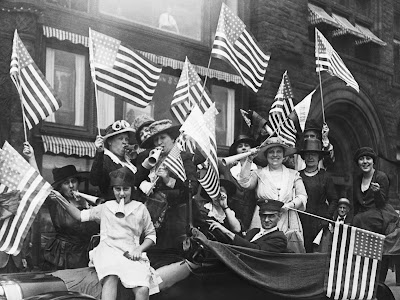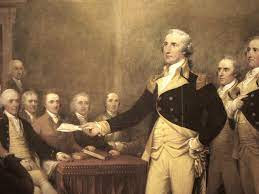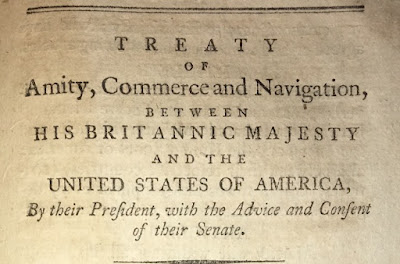On August 18, 1227, Genghis Khan, the Mongol leader who forged an empire stretching from the east coast of China west to the Aral Sea, dies in camp during a campaign against the Chinese kingdom of Xi Xia. The great Khan, who was over 60 and in failing health, may have succumbed to injuries incurred during a fall from a horse in the previous year.
Genghis Khan was born as Temujin around 1162. His father, a minor Mongol chieftain, died when Temujin was in his early teens. Temujin succeeded him, but the tribe would not obey so young a chief. Temporarily abandoned, Temujin’s family was left to fend for themselves in the wilderness of the Steppes.
By his late teens, Temujin had grown into a feared warrior and charismatic figure who began gathering followers and forging alliances with other Mongol leaders. After his wife was kidnapped by a rival tribe, Temujin organized a military force to defeat the tribe. Successful, he then turned against other clans and tribes and set out to unite the Mongols by force. Many warriors voluntarily came to his side, but those who did not were defeated and then offered the choice of obedience or death. The nobility of conquered tribes were generally executed. By 1206, Temujin was the leader of a great Mongol confederation and was granted the title Genghis Khan, translated as “Oceanic Ruler” or “Universal Ruler.”
Khan promulgated a code of conduct and organized his armies on a system of 10: 10 men to a squad, 10 squads to a company, 10 companies to a regiment, and 10 regiments to a “Tumen,” a fearful military unit made up of 10,000 cavalrymen. Because of their nomadic nature, the Mongols were able to breed far more horses than sedentary civilizations, which could not afford to sacrifice farmland for large breeding pastures. All of Khan’s warriors were mounted, and half of any given army was made up of armored soldiers wielding swords and lances. Light cavalry archers filled most of the remaining ranks. Khan’s family and other trusted clan members led these highly mobile armies, and by 1209 the Mongols were on the move against China.
Using an extensive network of spies and scouts, Khan detected a weakness in his enemies’ defenses and then attacked the point with as many as 250,000 cavalrymen at once. When attacking large cities, the Mongols used sophisticated sieging equipment such as catapults and mangonels and even diverted rivers to flood out the enemy. Most armies and cities crumbled under the overwhelming show of force, and the massacres that followed a Mongol victory eliminated thoughts of further resistance. Those who survived, and millions did not, were granted religious freedom and protection within the rapidly growing Mongol empire. By 1227, Khan had conquered much of Central Asia and made incursions into Eastern Europe, Persia, and India. His great empire stretched from central Russia down to the Aral Sea in the west, and from northern China down to Beijing in the east.
On August 18, 1227, while putting down a revolt in the kingdom of Xi Xia, Genghis Khan died. On his deathbed, he ordered that Xi Xia be wiped from the face of the earth. Obedient as always, Khan’s successors leveled whole cities and towns, killing or enslaving all their inhabitants. Obeying his order to keep his death secret, Genghis’ heirs slaughtered anyone who set eyes on his funeral procession making its way back to Karakorum, the capital of the Mongol empire. Still bringing death as he had in life, many were killed before his corpse was buried in an unmarked grave. His final resting place remains a mystery.
The Mongol empire continued to grow after Genghis Khan’s death, eventually encompassing most of inhabitable Eurasia. The empire disintegrated in the 14th century, but the rulers of many Asian states claimed descendant from Genghis Khan and his captains.
On August 18, 1920, the 19th Amendment to the Constitution, guaranteeing women the right to vote, is ratified by Tennessee, giving it the two-thirds majority of state ratification necessary to make it the law of the land. The amendment was the culmination of more than 70 years of struggle by woman suffragists. Its two sections read simply: “The right of citizens of the United States to vote shall not be denied or abridged by the United States or by any State on account of sex” and “Congress shall have power to enforce this article by appropriate legislation.”
America’s suffrage movement was founded in the mid 19th century by women who had become politically active through their work in the abolitionist and temperance movements. In July 1848, 200 woman suffragists, organized by Elizabeth Cady Stanton and Lucretia Mott, met in Seneca Falls, New York, to discuss women’s rights. After approving measures asserting the right of women to educational and employment opportunities, they passed a resolution that declared “it is the duty of the women of this country to secure to themselves their sacred right to the elective franchise.” For proclaiming a woman’s right to vote, the Seneca Falls Convention was subjected to public ridicule, and some backers of women’s rights withdrew their support. However, the resolution marked the beginning of the woman suffrage movement in America.
The first national women’s rights convention was held in 1850 and then repeated annually, providing an important focus for the growing woman suffrage movement. In the Reconstruction era, the 15th Amendment to the U.S. Constitution was adopted, granting African American men the right to vote, but Congress declined to expand enfranchisement into the sphere of gender. In 1869, the National Woman Suffrage Association was founded by Susan B. Anthony and Elizabeth Cady Stanton to push for a woman suffrage amendment to the U.S. Constitution. Another organization, the American Woman Suffrage Association, led by Lucy Stone, was formed in the same year to work through the state legislatures. In 1890, these two groups were united as the National American Woman Suffrage Association. That year, Wyoming became the first state to grant women the right to vote.
By the beginning of the 20th century, the role of women in American society was changing drastically: Women were working more, receiving a better education, bearing fewer children, and three more states (Colorado, Utah, and Idaho) had yielded to the demand for female enfranchisement. In 1916, the National Woman’s Party (formed in 1913 at the Congressional Union for Woman Suffrage) decided to adopt a more radical approach to women's suffrage. Instead of questionnaires and lobbying, its members picketed the White House, marched, and staged acts of civil disobedience.
In 1917, America entered World War I, and women aided the war effort in various capacities, which helped to break down most of the remaining opposition to women's suffrage. By 1918, women had acquired equal suffrage with men in 15 states, and both the Democratic and Republican parties openly endorsed female enfranchisement.
In January 1918, the women's suffrage amendment passed the House of Representatives with the necessary two-thirds majority vote. In June 1919, it was approved by the Senate sent to the states for ratification. Campaigns were waged by suffragists around the country to secure ratification, and on August 18, 1920, Tennessee became the 36th state to ratify the amendment. On August 26, it was formally adopted into the Constitution by proclamation of Secretary of State Bainbridge Colby.
On August 18, 1941, Adolf Hitler orders that the systematic murder of the mentally ill and handicapped be brought to an end because of protests within Germany.
In 1939, Dr. Viktor Brack, head of Hitler’s Euthanasia Department, oversaw the creation of the T.4 (Aktion) program, which began as the systematic killing of children deemed “mentally defective.” Children were transported from all over Germany to a Special Psychiatric Youth Department and killed. Later, certain criteria were established for non-Jewish children. They had to be “certified” mentally ill, schizophrenic, or incapable of working for one reason or another. Jewish children already in mental hospitals, whatever the reason or whatever the prognosis, were automatically subject to the program. The victims were either injected with lethal substances or were led to “showers” where the children sat as gas flooded the room through water pipes. The program was then expanded to adults.
It wasn’t long before protests began mounting within Germany, especially by doctors and clergy. Some had the courage to write Hitler directly and describe the T.4 program as “barbaric”; others circulated their opinions more discreetly. Heinrich Himmler, head of the SS and the man who would direct the systematic extermination of European Jewry, had only one regret: that the SS had not been put in charge of the whole affair. “We know how to deal with it correctly, without causing useless uproar among the people.”
Finally, in 1941, Bishop Count Clemens von Galen denounced the euthanasia program from his pulpit. Hitler did not need such publicity. He ordered the program suspended, at least in Germany. But 50,000 people had already fallen victim to it. It would be revived in occupied Poland.
On August 18, 1795, President George Washington signs the Jay (or “Jay’s”) Treaty with Great Britain.
This treaty, known officially as the “Treaty of Amity Commerce and Navigation, between His Britannic Majesty; and The United States of America” attempted to diffuse the tensions between England and the United States that had risen to renewed heights since the end of the Revolutionary War. The U.S. government objected to English military posts along America’s northern and western borders and Britain’s violation of American neutrality in 1794 when the Royal Navy seized American ships in the West Indies during England’s war with France. The treaty, written and negotiated by Supreme Court Chief Justice (and Washington appointee) John Jay, was signed by Britain’s King George III on November 19, 1794 in London. However, after Jay returned home with news of the treaty’s signing, Washington, now in his second term, encountered fierce Congressional opposition to the treaty; by 1795, its ratification was uncertain.
Leading the opposition to the treaty were two future presidents: Thomas Jefferson and James Madison. At the time, Jefferson was in between political positions: he had just completed a term as Washington’s secretary of state from 1789 to 1793 and had not yet become John Adams’ vice president. Fellow Virginian James Madison was a member of the House of Representatives. Jefferson, Madison and other opponents feared the treaty gave too many concessions to the British. They argued that Jay’s negotiations actually weakened American trade rights and complained that it committed the U.S. to paying pre-revolutionary debts to English merchants. Washington himself was not completely satisfied with the treaty, but considered preventing another war with America’s former colonial master a priority.
Ultimately, the treaty was approved by Congress on August 14, 1795, with exactly the two-thirds majority it needed to pass; Washington signed the treaty four days later. Washington and Jay may have won the legislative battle and averted war temporarily, but the conflict at home highlighted a deepening division between those of different political ideologies in Washington, D.C. Jefferson and Madison mistrusted Washington’s attachment to maintaining friendly relations with England over revolutionary France, who would have welcomed the U.S. as a partner in an expanded war against England.












No comments:
Post a Comment